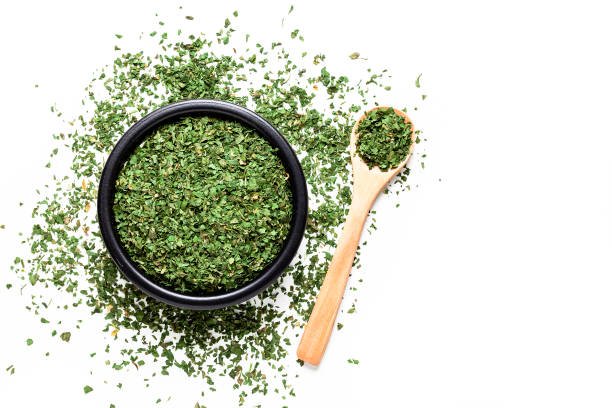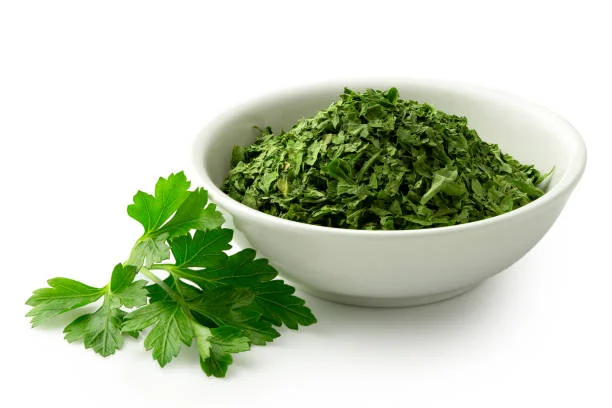البقدونس Parsley
Parsley, scientifically known as Petroselinum crispum, is one of the most popular herbs used widely in kitchens around the world. It is an herbaceous plant belonging to the Apiaceae family and is known for its vibrant green color and distinct aroma. While parsley is often used as a garnish or a simple addition to dishes, it has remarkable health benefits that make it an herb worth incorporating into your diet.
Nutritional Components of Parsley
Parsley is packed with essential nutrients that contribute to overall health. It is rich in vitamins such as Vitamin C, Vitamin A, and Vitamin K, as well as being an excellent source of minerals like iron, calcium, and magnesium. Parsley also contains antioxidants and fiber, which help support the digestive system and strengthen the immune system.
Varieties
Curly Leaf Parsley: Characterized by its curly leaves, often used as a garnish in dishes.
Italian Flat-Leaf Parsley: Features flat leaves with a stronger flavor, making it preferable for cooking.
Hamburg Parsley: Grown primarily for its thick roots, which are used in cooking.
Benefits
Enhances Digestive Health
Antioxidant Properties
Supports the Immune System
Improves Heart Health
Detoxifies the Body
Promotes Bone Health
Improves Skin Health
Ways to Use Parsley
In Cooking: Parsley is a great addition to many dishes and is commonly used fresh or dried in salads, soups, sauces, and appetizers. It can also be added to green juices for a unique flavor.
Parsley Tea: Parsley tea can be made by boiling its leaves in water. This tea helps improve digestion and supports kidney and bladder health.
Parsley Juice: Parsley can be juiced with other fruits or vegetables to create a nutrient-rich drink that supports overall health.
Topical Use: Parsley paste can be applied to the skin to treat skin inflammations or to lighten the skin and alleviate acne.
Medicinally Used Part
The primary part of parsley used for medicinal purposes is the leaves, which can be used fresh or dried in food and salads. Additionally, the roots and seeds are also used in some traditional medical applications.
Cultivation Methods
Soil Preparation:
Parsley grows best in nutrient-rich, well-draining soil. Soil fertility can be improved by adding organic fertilizers before planting.
It is recommended to plow the land and incorporate organic compost to enhance fertility.
Seed Planting:
Seeds are sown directly in the soil at a depth of 1 cm, maintaining a spacing of 15-20 cm between each seed.
Soaking the seeds in water for 24 hours before planting is advised to accelerate germination.
Irrigation:
Soil moisture should be maintained consistently, especially during the germination period.
Avoid overwatering to prevent root rot.
Planting Season
Parsley can be grown year-round in temperate and warm regions. However, there are three preferred planting seasons:
First season: September to October
Second season: March to April
Third season: June to July
In colder regions, it is preferable to plant after the snow melts and temperatures rise, usually from March to May, for seed production.
Export details worldwide
Types: Crushed and powdered.
Drying: Natural (sun-dried) and industrial.
Packaging: Sacks.
Package weight: 20 kg.
Sorting and packaging: Automated.
Origin: Egypt.





اترك تعليقاً